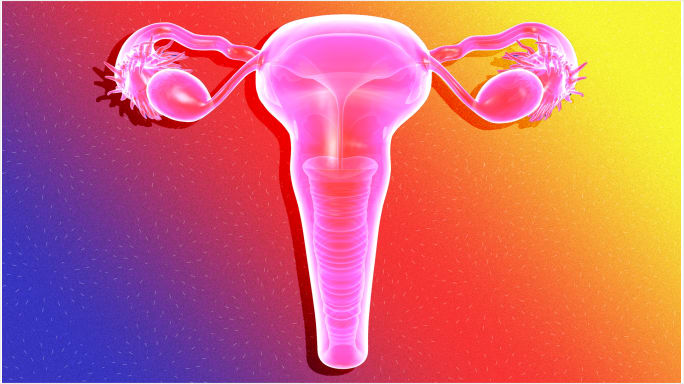Reliable numbers are difficult to find but pelvic pain for women ranges from 14 percent to 32 percent worldwide.
Tai Chi first came to my attention when I joined a Facebook group for patients suffering from complications of a LEEP (Loop Electrosurgical Excision Procedure.) A few individuals in the group noted that Tai Chi helped ease and relieve their pain, which is connected to the procedure that has left many of us mentally, emotionally, and physically drained. For me personally, yoga has always been my go-to pain reliever—it guided me through my successful recovery of vaginismus three years ago. Since getting my LEEP last year, I had mild pelvic pain, but other women intensely describe their inability to sit up, pain in the abdomen, and pain during sex (these are only a few side effects of the procedure). Once I started researching Tai Chi and it’s benefits a bit more, I found that the ancient Chinese martial art was successful in aiding several ailments.
How is Tai Chi practiced?
Tai Chi is done while standing up. Several women I’ve spoken to have said that after their LEEP, they couldn’t sit down for long periods of time. Tai Chi could be a beneficial factor in recovering from any type of pelvic pain that prevents a patient from sitting down.
Circular movements, all the way from the head to your toe, are worked when going through a flow in Tai Chi. This provides great circulation for the entire body.
Breathing is essential with Tai Chi. Relaxing and expanding the belly to help loosen up the body and the abdomen is important. Of course, pelvic pain isn’t just prevalent in women who have had LEEPs (this is just where my initial research began). Pelvic pain can occur during pregnancy, cramping, from cysts, etc. Overall, Tai Chi is a low impact type of movement that would not harm any of these diagnoses any further.
What is pelvic pain?
Pelvic discomfort can include:
- pain while sitting
- painful sex
- pain after using the bathroom
- pain while sitting on a bike
- abdominal pain
- urinary pain
- labia pain
Pelvic pain is common in women, however due to embarrassment and shame, some pain goes undiagnosed. While most people look towards painkillers, naturally stretching and building strength within the body is another way to work through alleviating the pain.
The pelvis is located in your abdomen area and include organs such as the your bowel, bladder, women, and ovaries. If you are experiencing pelvic pain, it’s usually stemming from one of these organs.
How does Tai Chi effect the pelvic floor?
While yoga can definitely work the pelvic floor muscles, Tai Chi is a less strenuous form of exercise. In power poses, especially in hot yoga, the pelvic floor muscles are engaged but this may be too stressful on the body for some (especially when just beginning). Instead, Tai Chi has an emphasis on all joints and a complete range of motion in the upper and lower body with slow flowing movements. Let’s keep this is mind when thinking about Tai Chi: it’s very, very slow. In addition to these slow movements are the breathing exercises where the brain is focused.
For some people overcoming, for example, the pain from their LEEP, they discussed meditating on the pain in the pelvis, or more internally and in their cervix. I can see how Tai Chi, and breathing exercises, can communicate that meditative idea elsewhere to different areas of pain on the body.
Maureen Caldwell, a senior trainer for Tai Chi for Health Institute says that Tai Chi is known to reduce and relieve pain. She says, “it is not a cure, but helps relieve.” She explains that,”Researchers in Sweden found those having Fibromyalgia experienced pain relief in seven weeks of Qigong sessions. These benefits continued to maintain four months after lessons stopped.”
For the pelvic muscles, Caldwell says, “Specific movements working the pelvic floor muscles in Tai chi is the deep breathing and Qigong.” Deep breathing is called Dantien breathing where deep and internal breathing is encouraged. “The performance of safe and simple movements can help overcome the fear of movement in someone who lives with pain. Tai Chi movement can also help to mobilize a sensitive nervous system and desensitize it. Overtime, movement can then become less and less painful,” says Caldwell.
Natalia Monka, a registered Canadian physiotherapist, wrote on her blog that a specific study involving Tai Chi and chronic back pain found that the exercise is a productive intervention for long term symptoms. She writes that, “Although chronic back pain and chronic pelvic pain are not anatomically the same thing, both conditions involve a malfunctioning nervous system that is stressed out. I would imagine that if the study shifted the focus on including participants with chronic pelvic pain, the positive findings would be similar.”
Since Tai Chi focuses on slowing down motions, breathing, and the overall body, the core is challenged and the pelvic floor muscles are positively worked.
What other benefits does Tai Chi have?
Pelvic pain isn’t terribly documented in scientific literature (due to women’s pain being misunderstood and ignored) but other issues such as osteoporosis, back pain and fibromyalgia are all noted as being impacted during Tai Chi.
Overall, Tai Chi is said to improve livelihood. A 2017 study found that, Tai Chi is a safe aerobic exercise that improves the quality of life in “terms of physical function, role of physical, vitality and general health in postmenopausal women.”
Regardless, it’s important to listen to your body. Consult a pelvic floor specialist if necessary and don’t over work your muscles. Tai Chi can be practiced outdoors, indoors, with a class, or alone—it’s versatile and easy accessible.
Caldwell expands on her own personal health issues during a move from Colorado Springs to Denver and says that, “When I am not moving, like I have the last five months, I am regular with teaching and practicing Tai Chi. Once I stopped I had a lowered immune system and had things flare up on me. I am walking proof in this way and a few others Tai Chi practice even for five 10 minutes or an hour or two, improves your quality of life in some many ways.”




comments